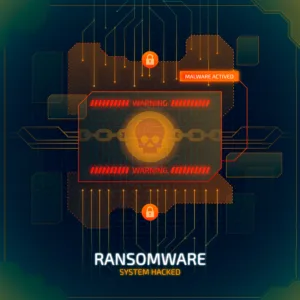
Table of Contents
Introduction
In the realm of cybersecurity, the emergence of sophisticated malware poses a significant threat to individuals, organizations, and even nations. Among these threats, BIFROSE Linux Malware has garnered attention due to its intricate design and stealthy operations.
In this blog post, we delve into the depths of BIFROSE, exploring its modus operandi and offering insights into mitigating its impact.
Understanding BIFROSE Linux Malware
BIFROSE, named after the mythical rainbow bridge in Norse mythology, serves as a gateway for cybercriminals to infiltrate Linux-based systems. It operates with a multifaceted approach, leveraging various techniques to evade detection and establish persistent access.
1. Infection Vector:
BIFROSE primarily infiltrates systems through common attack vectors such as phishing emails, malicious downloads, or exploiting vulnerabilities in outdated software. Once a system is compromised, BIFROSE stealthily embeds itself within the system, making detection challenging.
2. Stealthy Persistence:
One of the distinguishing features of BIFROSE is its ability to maintain persistence within the compromised system. It achieves this by employing rootkit capabilities, which enable it to conceal its presence from security mechanisms and antivirus software. Additionally, BIFROSE utilizes advanced obfuscation techniques to evade detection by traditional security tools.
3. Command and Control (C2) Communication:
BIFROSE establishes communication with its command and control servers, allowing threat actors to remotely control compromised systems. Through this channel, cybercriminals can execute commands, exfiltrate sensitive data, or deploy additional payloads, amplifying the scope of the attack.
4. Data Exfiltration and Espionage:
Beyond its initial infiltration, BIFROSE serves as a conduit for data exfiltration and espionage. It can stealthily harvest sensitive information, including credentials, intellectual property, or financial data, compromising the integrity and confidentiality of targeted systems.
VMware Domain Mimicry
The Bifrost malware for Linux employs a technique called “VMware domain mimicry” to evade detection. This technique involves the malware modifying its behavior to mimic the activity of legitimate VMware processes and components, thereby appearing innocuous to security tools that might be monitoring for malicious activity.
Here’s how the Bifrost malware accomplishes this mimicry:
1. Process Names: The malware may name its processes or components in a way that resembles legitimate VMware processes. For example, it might use names similar to those of VMware services or executables.
2. Behavioral Analysis: Bifrost may adjust its behavior to closely resemble that of VMware processes. This could involve mimicking the resource usage patterns, network communications, or file access behaviors typically associated with VMware operations.
3. Registry/Configuration Entries: The malware might create or modify registry keys, configuration files, or other system entries to further imitate the presence and behavior of VMware components.
4. Network Traffic: Bifrost might generate network traffic that appears similar to legitimate VMware communications. This could involve using protocols or data formats commonly associated with VMware management or virtual machine operations.
By mimicking VMware domain activity, Bifrost aims to evade detection by security tools that rely on signature-based detection or behavioral analysis to identify malicious software. This tactic exploits the trust placed in legitimate software and infrastructure components, making it more challenging for security measures to differentiate between benign and malicious activity.
Remedial Measures
Given the sophisticated nature of BIFROSE Linux Malware, combating its threat necessitates a comprehensive approach encompassing proactive measures and reactive strategies.
Here are some remedial measures to mitigate the risk posed by BIFROSE:
1. Implement Robust Security Practices:
Adopt a multi-layered security approach, including firewalls, intrusion detection systems (IDS), and antivirus software, to detect and prevent BIFROSE infections. Regularly update security patches and software to mitigate known vulnerabilities exploited by the malware.
2. Enhance User Awareness:
Educate users about the risks associated with phishing emails and malicious downloads. Encourage vigilant behavior, such as scrutinizing email attachments and avoiding suspicious links, to minimize the likelihood of BIFROSE infiltration.
3. Deploy Endpoint Detection and Response (EDR) Solutions:
Invest in EDR solutions capable of detecting anomalous behavior indicative of BIFROSE activity. Leverage advanced threat detection algorithms and machine learning techniques to identify and mitigate potential threats in real-time.
4. Conduct Regular Security Audits:
Perform comprehensive security audits to identify potential vulnerabilities and weaknesses within the infrastructure. Utilize penetration testing and vulnerability scanning tools to assess the resilience of systems against BIFROSE and similar threats.
5. Implement Network Segmentation:
Partition the network into segments to limit the lateral movement of BIFROSE within the infrastructure. By segregating critical assets and implementing access controls, organizations can contain the spread of the malware and minimize its impact on vital systems.
Conclusion
BIFROSE Linux Malware represents a formidable threat in the cybersecurity landscape, capable of inflicting significant damage to individuals and organizations. By understanding its modus operandi and adopting proactive security measures, stakeholders can fortify their defenses against this insidious threat.
Vigilance, robust security practices, and continuous adaptation are essential in safeguarding against the evolving threat posed by BIFROSE and similar malware strains.
Read more on https://cybertechworld.co.in for insightful cybersecurity related content.




















I truly appreciate this post. I have been looking everywhere for this! Thank goodness I found it on Bing. You have made my day! Thx again
Its such as you learn my mind! You seem to understand so much approximately this, like you wrote the guide in it or something.
I think that you could do with some % to drive the message home a
bit, but instead of that, this is magnificent blog.
A great read. I will certainly be back.